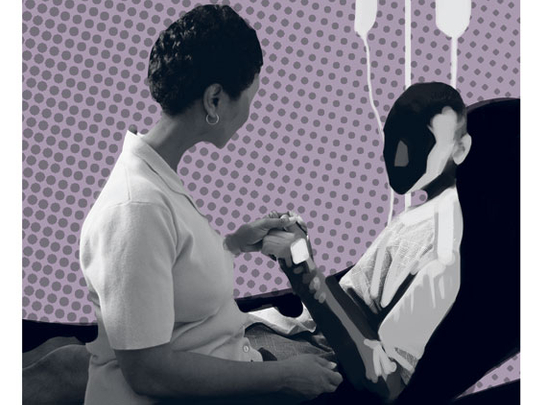
In the June newspapers, I read about the death, at the ripe old age of 83, of one Dr Jack Kevorkian, medical pathologist and much vilified proponent of assisted suicide.
For challenging social and religious taboos about dying, for defying courts and assisting in hastening the deaths of over 100 terminally ill patients, he served eight years in prison after being convicted of second degree murder. But whatever the moral issues, his advocacy of the right of the terminally ill to choose how and when they die helped to increase and improve hospital care in the US.
As a trained volunteer for an organisation that helps the depressed and the suicidal, I was very disturbed to learn that India has the highest incidence of suicides among the young (ages 16 to 45) in the world. This phenomenon among the young is in large measure a cry for help rather than an active decision to take one's life. A young man resorts to this not because he wants to die, but simply because he wants to end the pain. The reasons are mostly emotional, caused by incidents resulting in feelings of depression, low self-esteem, guilt and helplessness.
My focus here, however, is the person who wants to end his/her life because he/she suffers from a debilitating disease with no hope of recovery, yet his/her life is being prolonged by artificial props on the well-meaning insistence of family, the medical fraternity, and ethical and legal inhibitions.
What the person is actually feeling, in addition to the hopelessness of the case and the despair of never recovering, is a combination of helplessness and humiliation, the feeling that he/she is being manipulated. The persons has no say in the matter of how he/she chooses to live his/her own life, or not live it at all. To an independent character, all this is a debasement that cannot be borne.
Pitiful case
A few months ago, the Indian media reported the strong opposition to a representation for the withdrawal of life-support systems to Aruna Shanbag, a young nurse who was sexually assaulted by a menial worker in a Mumbai hospital.
She has not recovered from the vegetative state she was reduced to more than 35 years ago and has been lying in a hospital bed, a skeletal heap of living bones and withered flesh, abandoned by family and fiance, fed and tended to by a few caring colleagues. Derek Humphrey, journalist, author and campaigner for lawful physician-assisted dying as an option for the terminally ill, was inspired to write his best-selling book Final Exit — the Practicalities of Self-Deliverance and Assisted Suicide for the Dying after helping his first wife end her life when the pain and indignity of inoperable bone cancer became unbearable.
At all times he stresses that this way out is only for the advanced terminally ill and where hospice care is not available or affordable, never for the mentally disturbed and depressed, the disabled or the handicapped.
Choosing to end one's life is a very difficult decision and doing it right entails many responsibilities for the family, the physician and the patient himself. It is necessary, advises Humphrey, to select the right doctor, to know the law and its possible injurious effect on the survivors. Moreover, some means are unacceptable because of the chances of surviving and then living, brain-damaged or vegetative, causing untold trouble for the relatives.
Meticulous thought should be given to issues of support groups for the dying, insurance and the possible ‘suicide exclusion' clause, letters to be written which will save others from harassment and worse, instructions for after death such as organ donation, and more. He emphasises the careful planning required to decide the right time to exit (a personal choice) and finally exit life with certainty, dignity and grace. To those of us who are healthy, or in the prime of life, the idea of death and how to die may be bizarre, yet one hears increasingly voices among all age groups expressing the desire to die rather than face degradation and humiliation arising out of the relentless onslaught of pain and agony. And helpless guilt for imposing on a loved one.
To some there is the religious and moral conviction that taking one's own life is sinful. Some share the belief in one's right to exercise one's choices both in life and in death.
India's Supreme Court concluded that the right to live with dignity includes the right to die with dignity and as such passive euthanasia in the rarest of rare cases may be favoured. But not before adequate and effective checks and balances are in place that would prevent misuse and abuse of this landmark ruling.
Vimala Madon is a freelance journalist based in Secunderabad, India.










